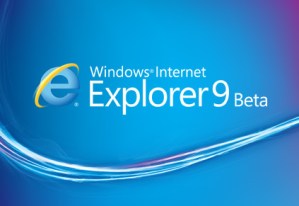
Software giant Microsoft is aiming to ratchet up the competition in the Web browser wars, today launching a public beta of Internet Explorer 9. Microsoft has been teasing the browser for some time with relatively featureless developer previews that have focused on performance and improving the browsers rather lackluster record for standards support. But with the public beta, Microsoft has also taken the wraps off a spate of new features designed to make using the Web faster and more social—and, of course, Microsoft-enhanced.
Internet Explorer 9 rolls out major interfaces changes to the Web browser, cramming browser tabs into the same area as the browser location bar and other changes to minimize the amount of interface on screen all the time. Microsoft has also worked to make Internet Explorer integrate carefully with Windows 7: individual sites can be pinned to Windows 7’s task bar—and sites that want to support Microsoft’s APIs can display bits of information in the task bar, such as the number of new items or unread messages. IE9 combines the search bar and location bar into a single field that also navigates through history and favorites, and a new Download Manager incorporates reputation-based security features, so installers and software from trusted vendors may not set off alerts—or at least as many alerts.
Microsoft has also spent a lot of effort bringing Internet Explorer 9’s performance up to par with the rest of the Web browser industry. Internet Explorer 9 offers hardware acceleration, using the computing capability in graphics processing units to speed the performance of Web sites. (Firefox 4 beta is the primarily other browser working on hardware acceleration; Google Chrome is planning it too.) Internet Explorer 9 also incorporates a new “Chakra” JavaScript engine, substantially improving IE’s scores in JavaScript benchmarking tests: the boost should help scripting-intensive sites and services, such as cloud-based computing applications—Google Apps and the Web-based versions of Microsoft’s Office applications come to mind. Internet Explorer 9 also makes many steps towards supporting new Web standards, including HTML5’s video, audio, and canvas tags, as well as improved support for CSS3.
Internet Explorer 9 is very much a beta: there are known bugs, and Microsoft isn’t ready to put its official “released” stamp on the software yet. But the release is a sign that Microsoft continues to take the Web seriously, and isn’t willing to cede superior Web browsing experiences to the likes of Firefox, Chrome, Opera, or (heaven forfend) Apple.


